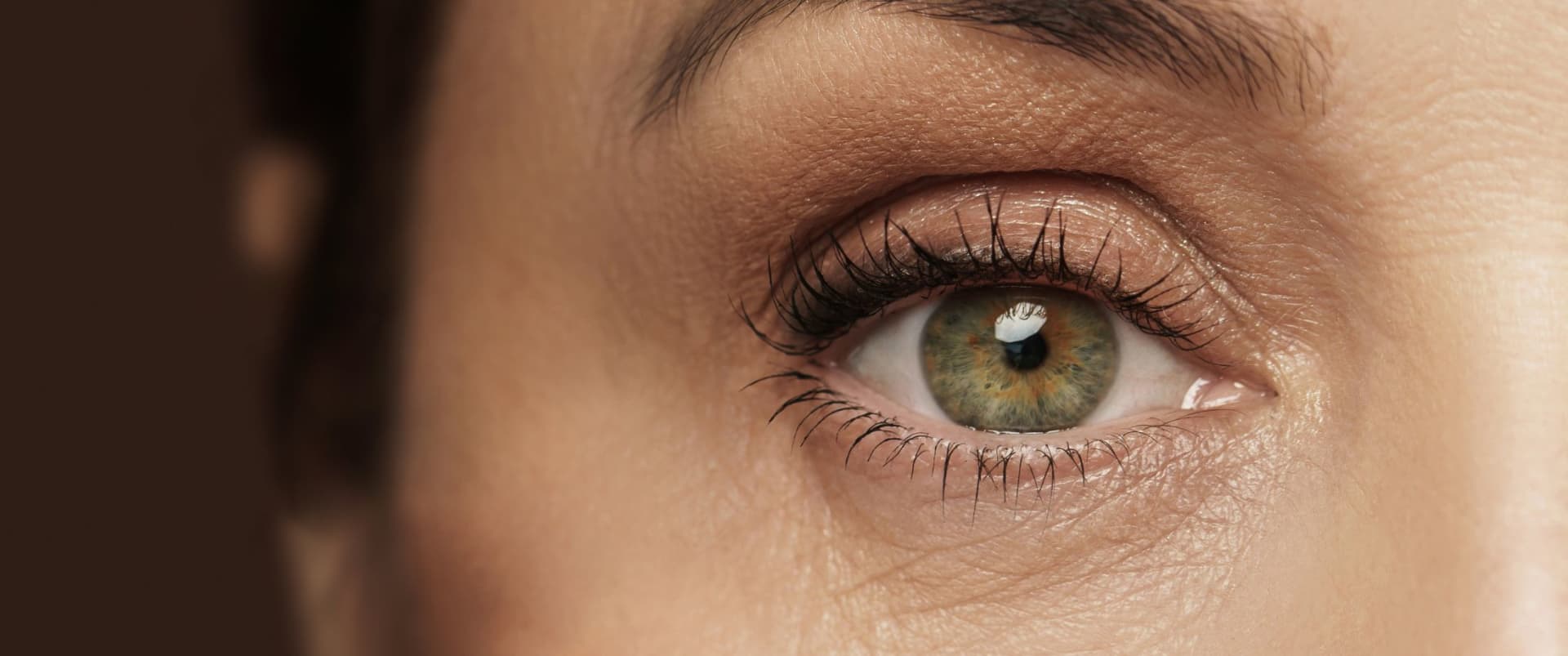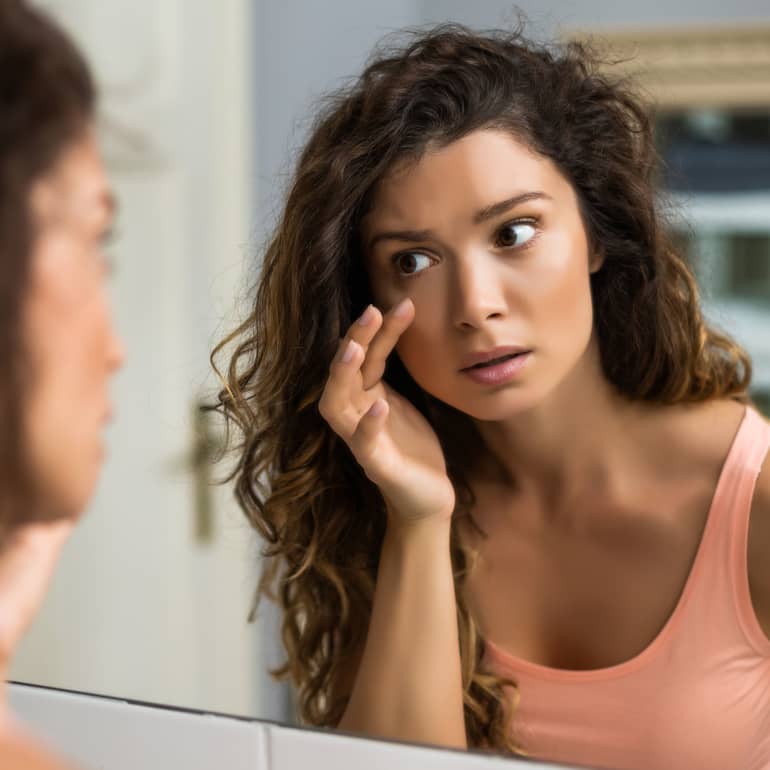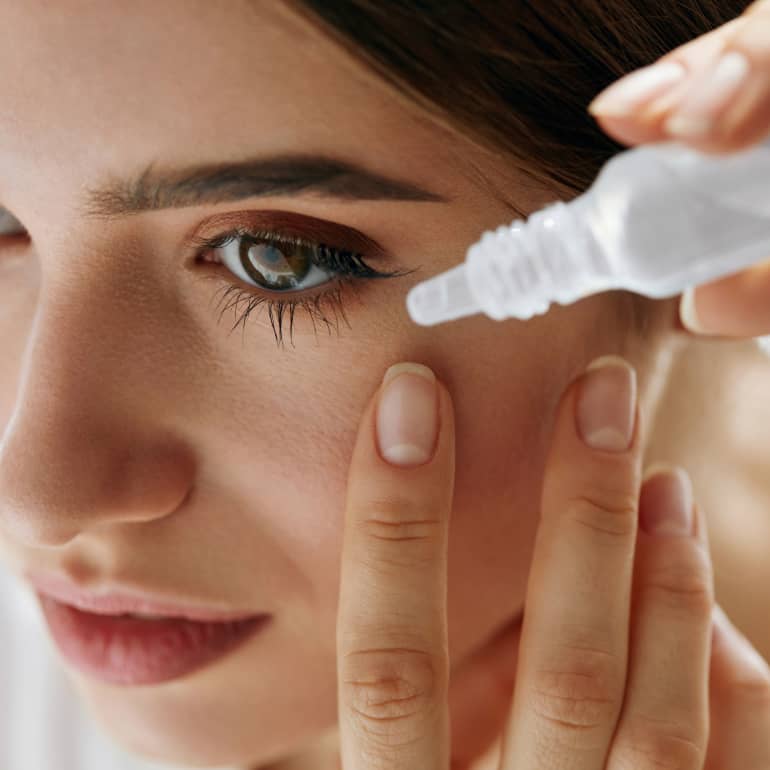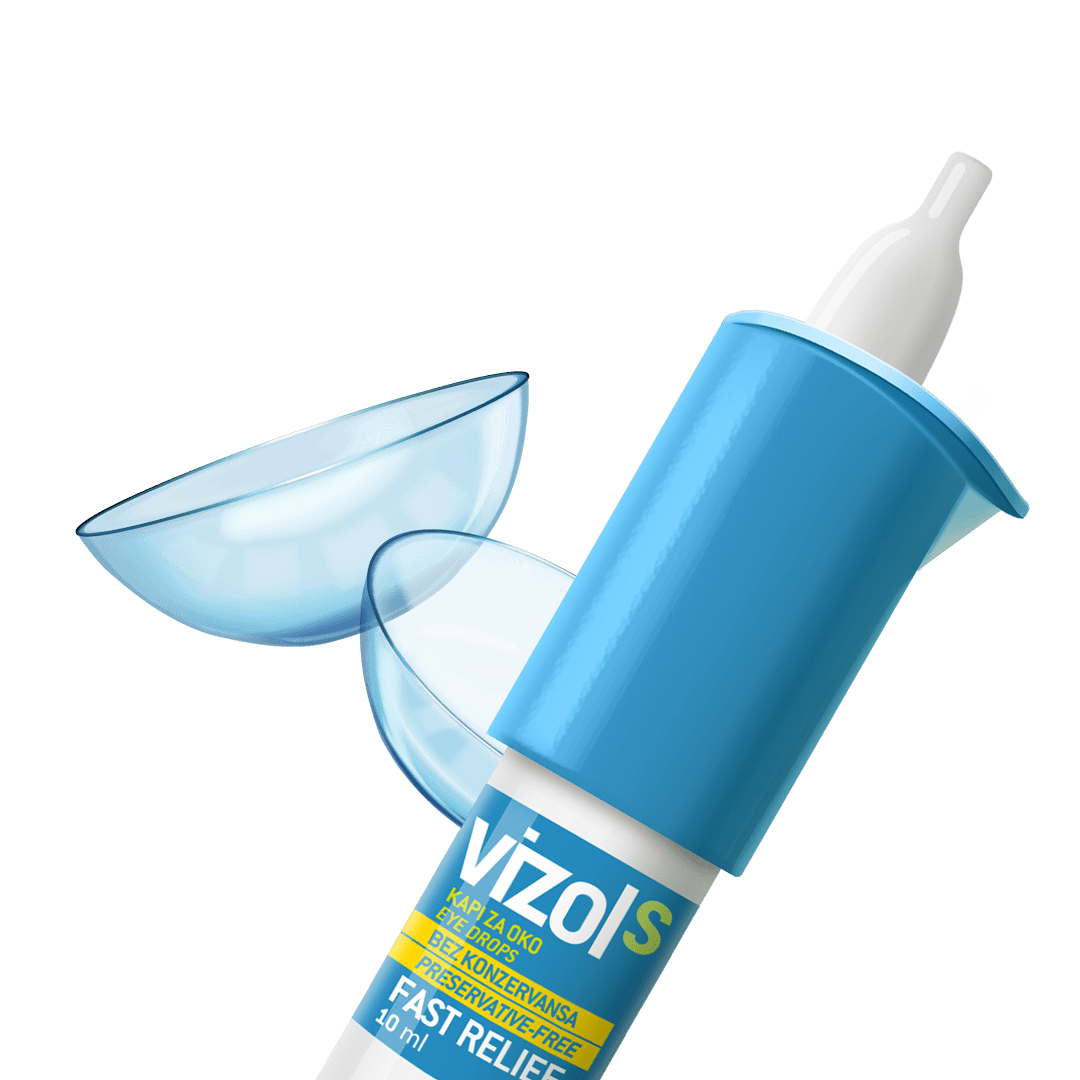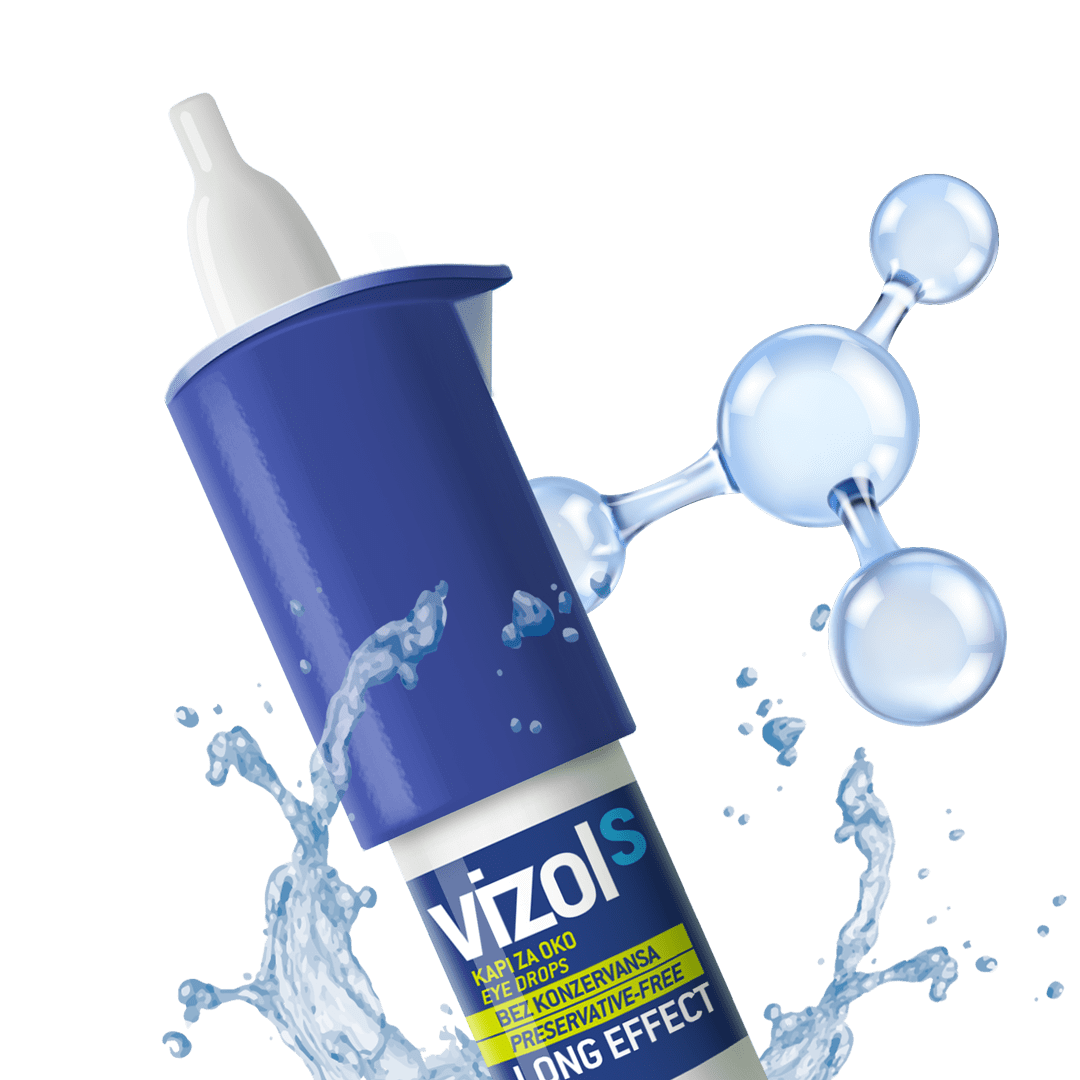How to recognise it
One of the first signs of dry eye is excessive tearing, by which the eye wants to protect dry spots on the surface caused by an unstable tear film. Other symptoms include the feeling of burning, grittiness, stinging, scratching, a foreign body or other symptoms that are uncomfortable to the eye.
Excessive looking at screens at work or at home, dry air, sun, wind, the use of contact lenses or medications, are just some of the factors that can cause dry eyes.
If you pay attention to the symptoms and start dealing with them on time, the progression of this disease can be prevented, but most people are not aware of their symptoms or give them the necessary attention. Thus, the disease progresses, and as with most diseases - prevention is the best choice.

